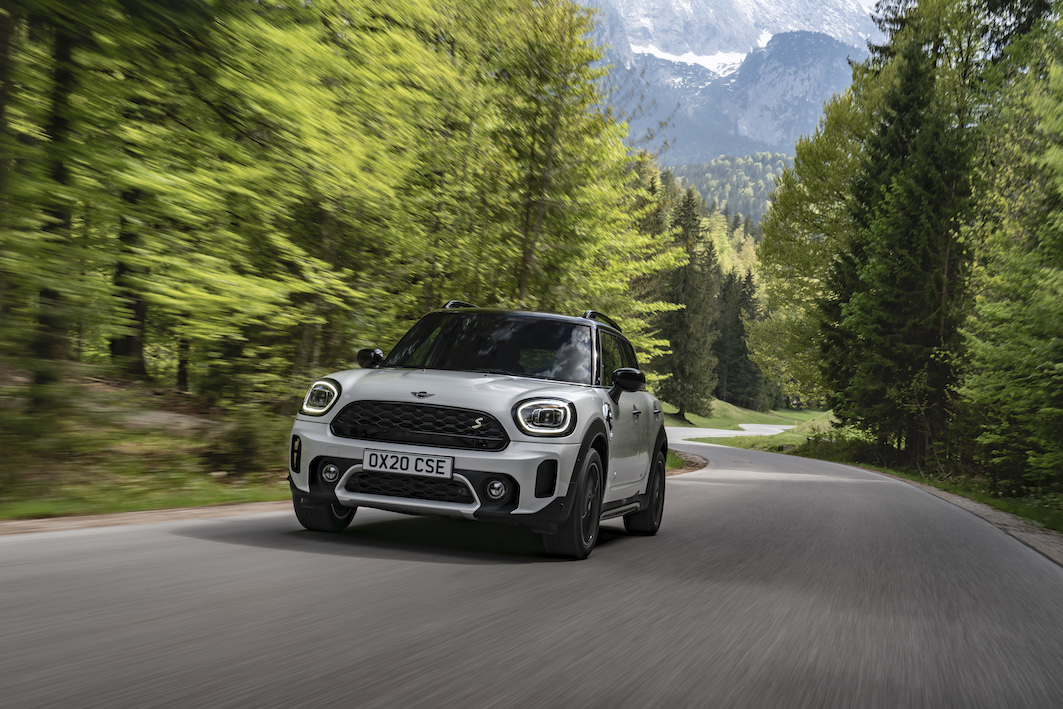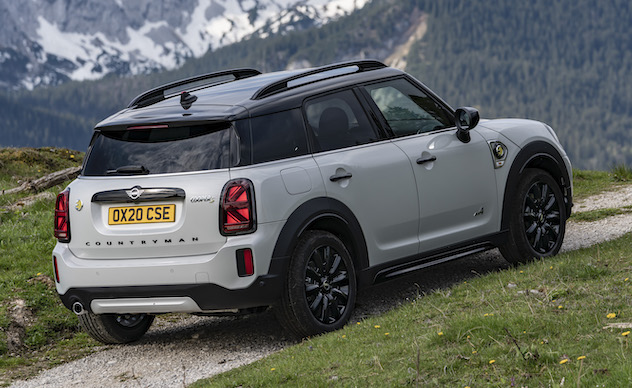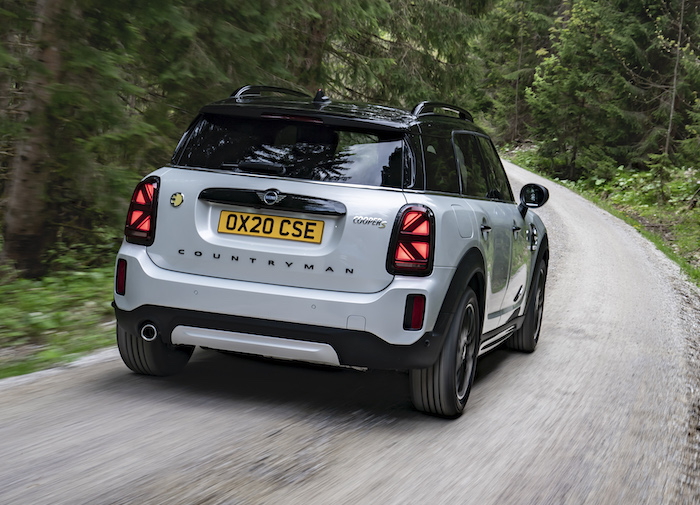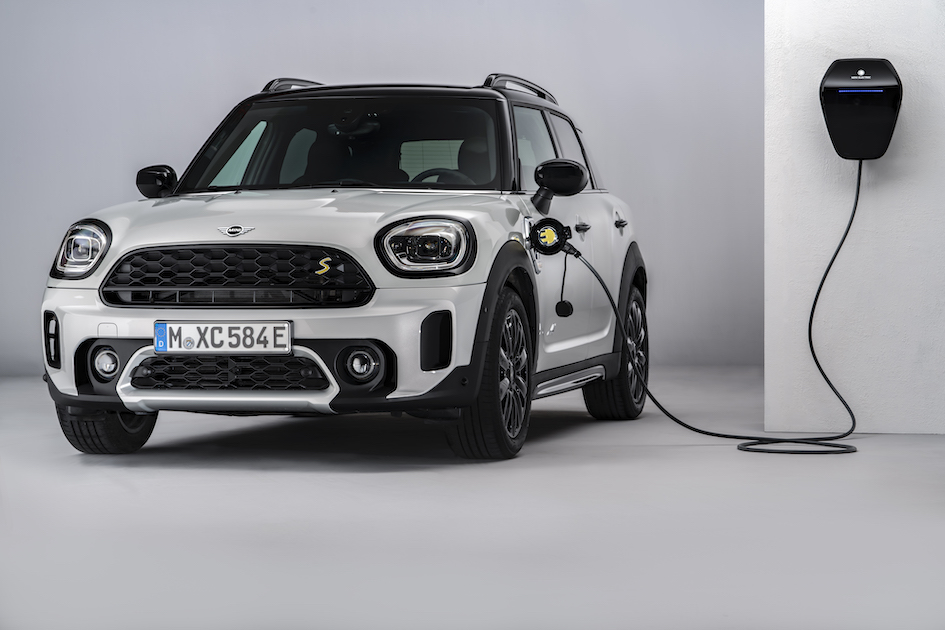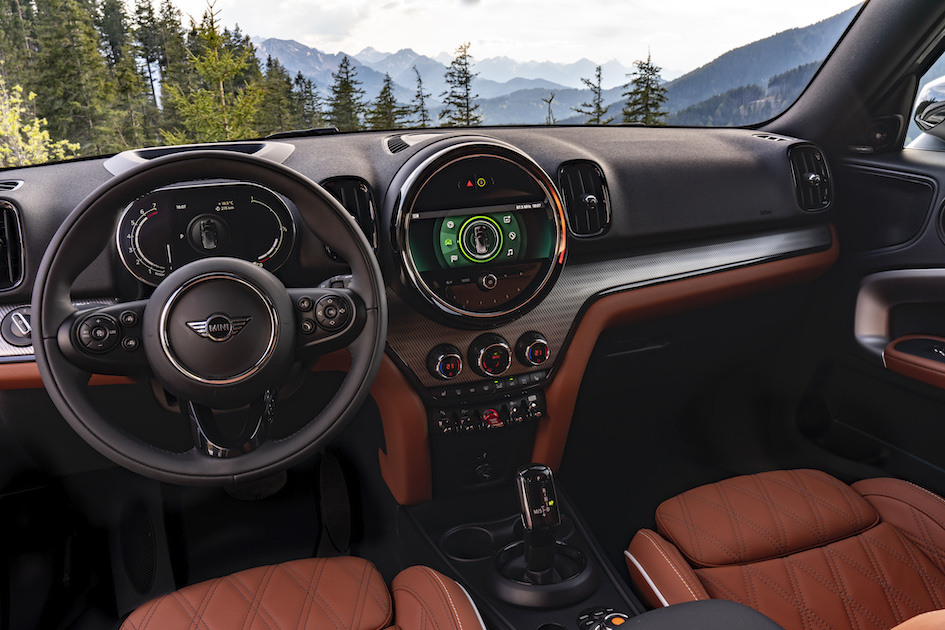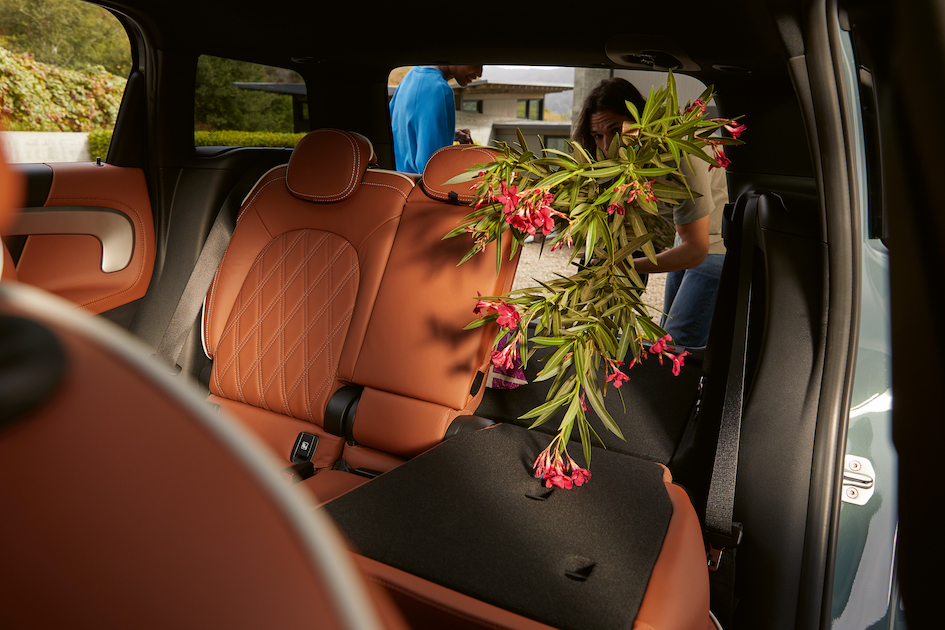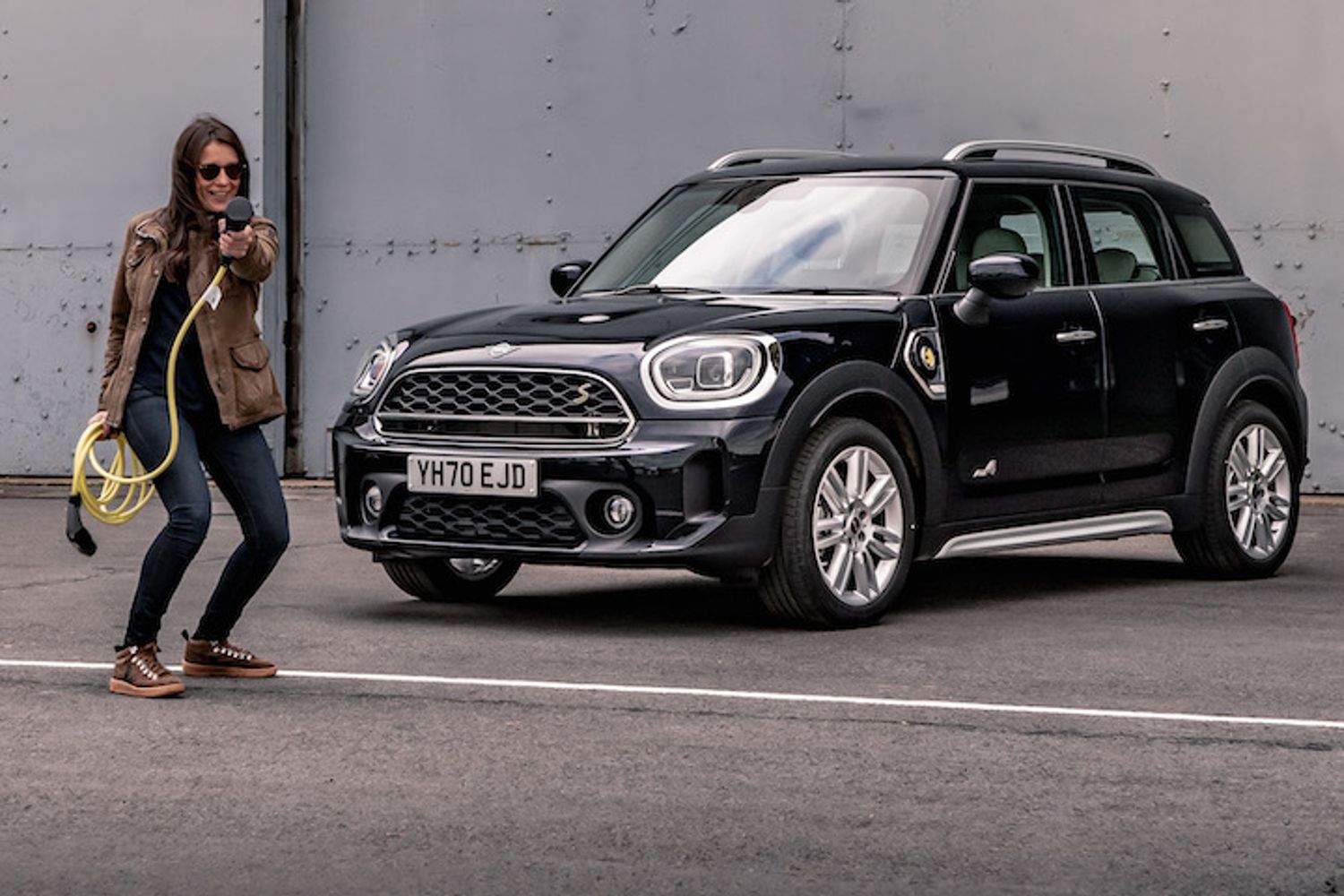With prices for a new Countryman PHEV now becoming very tempting for a modern-looking, well equipped and efficient hatchback, the plug-in hybrid Mini is a good all-rounder for a lot f buyers. Read on for more info on what to look for…
Prices
The most attractively priced Countryman PHEVs rolled off the production line between 2017 and mid-2020, after which the facelifted model arrived.
Marked out by a sleeker look that was embellished by newly standard LED headlights and MINI’s much vaunted Union Jack rear lamp clusters, it was equipped with a larger battery and benefited from a spot of interior refreshment. As well as some new fabrics and trimmings, it gained new tech trinkets, including an upgraded infotainment system and MINI’s new digital cockpit display, which replaced the analogue dials in the binnacle.
Don’t for a minute think the pre-facelift models are unworthy of attention though. Given the lower prices, they're still recommendable, even if the post-2020, second-generation Countryman is more recommendable with its extra helping of interior space, slicker design and more modern technology.
Just one plug-in Countryman version – the Cooper S E All4 – was originally available, and if this was the cake then MINI’s famous option packs provided the opportunity to add plenty of attractive icing, giving rise to a final price tag that was rather less sweet in the process.
In late 2018 MINI also added Classic, Sport and Exclusive trims to the mix, the main differences being that Sport versions were available with the no-cost option of sport suspension, and were predictably given bigger 18-inch wheels, a body kit and some racier John Cooper Works interior trim, while Exclusive models added features like bespoke alloys, extra chrome and leather upholstery.
In an appropriately characterful and upmarket-feeling setting the Cooper S E All4 included all the equipment you’d realistically expect to find in a contemporary upscale hatchback from the outset. In a modern-day hybrid, you’d arguably now also hope to see high-tech digital dials and crisply rendered displays giving details like the battery’s level and available range, so with its analogue dials and basic power meter the pre-facelift car fell a little short in this respect, but this is a minor gripe.
Spotting a MINI Countryman PHEV
Ungainly, contrived and wearing its MINI hallmarks a little too awkwardly, or a cool and characterful alternative to the predictable small SUV herd – the Countryman definitely polarises opinion, but that hasn’t hampered its perennial popularity and sales success. Unlike the classic MINI hatch, the Countryman wasn’t available with the brand’s entry level ‘One’ trim, so the PHEV started life exclusively in sportily positioned Cooper S form, as highlighted by its front and rear S badges.
These appear, as does an ‘e’ motif on the tailgate and flanks that tells you you’re looking at an electrified MINI, in a vivid shade of yellow to subtly distinguish the Countryman S E All4 from its more conventionally powered stablemates.
Facelifted 2020 cars look a little sleeker, as of course they should, and their LED headlights and Union Jack design LED tail lights also help to mark them out. Inside, you get typically offbeat cabin design that perfectly complements the distinctive exterior and exudes the kind of quality you’d expect from a premium offering at this level.
The curvaceous dash with its central ‘dinner plate’ display doesn’t differ markedly from conventionally powered models, and in pre-facelift cars nor do the analogue dials in the binnacle.
As mentioned, special digital displays relating to the hybrid system are a little conspicuous by their absence - a rather small power meter that slightly frustratingly replaces the rev counter is the only real concession to hybrid driving. Very little else is different, which as far as we’re concerned is no bad thing.
The battery and electrical system’s installation has necessitated mounting the rear seats slightly higher, but headroom still more than suffices, and while boot space is also slightly down on the regular car’s, the 405-litre capacity is still more generous than you’ll find in BMW’s own 2-Series hybrid hatch or Volkswagen’s latest Golf, for example.
Top tech
The clue’s in the name, but the fact that all four of the MINI Countryman Cooper S E All4’s wheels are powered makes it quite a rarity in its class. Since its introduction a 1.5-litre three-cylinder petrol engine has been tasked with turning the front wheels, and brings 134bhp to the party, while an 87bhp electric motor fed by a 7.6 kWh battery in early versions or a larger 9.6 kWh unit in post-facelift cars brings up the rear.
Combined, they rustle up a healthy 221 bhp in the original model, while the latest examples trail them very slightly at 217 bhp, probably because MINI needed to meet tougher emissions regulations by that point. Given that these outputs come close to matching the more performance-focused and exclusively petrol-powered Countryman John Cooper Works version from further up the range, the hybrid can definitely justify its evocative Cooper S badging.
Predictably, then, the plug-in Countryman needs no more than 6.8 seconds to tackle the 0-62mph sprint, which is almost hot hatch quick, and certainly feels it thanks to the motor’s instantaneous impact and the fact that the power is put down nice and crisply via both axles. Like all MINIs, the hybrid positively eggs its driver on to exploit this punchy performance to the max on twisty roads, although understandably the considerable extra weight of its hybrid system is definitely detectable.
Naturally, the Countryman Cooper S E All4’s real strengths lie in how it manages the interplay between the engine and motor to make progress as swift, serene and easy on the wallet and the environment as possible. As well as the ability to capture energy during braking and coasting and channel it back into the high-voltage battery, it also offers an Auto eDrive mode that keeps the combustion engine shut down for as long as possible at speeds of up to 50mph, and a Max eDrive mode that prioritises the electric motor right up to 78mph, unless you really floor the throttle or battery capacity drains beyond a certain point.
There’s also a useful Save setting, which allows you to bank electrical energy to use at a later stage of your journey, when perhaps you might be entering a town or city and can really make the most of it.
As for equipment, standard fare includes air conditioning, sat-nav, DAB, rear parking sensors and Bluetooth phone connection. We’d be tempted to keep an eye out for pre-facelift examples equipped with the optional Navigation Plus Pack, which replaced the standard 6.5-inch sat nav screen with an 8.8-inch version and added even more sophisticated connectivity features. From 2020 onwards the 8.8-inch navigation system became standard, as did MINI’s digital display cockpit, which put paid to the previously analogue dials in the binnacle.
Anyone buying new needed to prepare to be the proverbial kid in a sweetshop when they happened upon the options list. It included a plethora of tempting styling personalisation opportunities, as well as more common enhancements like upgraded suspension with adaptive dampers that tailor their settings to suit how and where you’re driving, a posh Harman/ Kardon audio system, a head-up display and a panoramic sunroof.
Fuel economy
In an ideal world the MINI Countryman Cooper S E All4 is theoretically capable of covering between 149 and 166 miles using each gallon of fuel it’s fed, helped of course by the electric motor’s input. In reality, though, we’d probably bank on no more than around 60 miles, which of course isn’t to be sniffed at, particularly as it doesn’t come at the expense of engagingly peppy performance.
Depending on version and generation, CO2 output officially ranges from between 44 g/km and 56 g/km.Although the plug-in Countryman’s lithium-ion battery increased in size as part of the 2020 facelift, the range the motor is capable of covering unaided by its combusting counterpart doesn’t appear to have made any quantum leaps as a result.
Officially, drivers can expect to eke upwards of 26 miles out of a charge, but we’d wager that around 20 would be a more realistic expectation. Nevertheless, this should mean that zero-emission, low-cost commutes won’t be beyond the realms of possibility for many owners. One point to note is that at 36 litres the plug-in Countryman’s fuel tank is considerably smaller than its petrol and Diesel counterparts, almost certainly due to the need to liberate space for the battery. That means fuel stops on longer journeys might be a little too frequent for comfort.
What goes wrong?
It might seem like a minor detail, but anyone who has lived with a car plagued with an annoying squeak or rattle will confirm that given time it can become disproportionately irksome. Despite its undeniably strong build quality, dashboard rattles are reportedly not unusual in the second-generation Countryman which forms the basis for the plug-in hybrid, and fixing them is notoriously laborious due to the need for pretty major dismantling of the dash.
Aside from this niggle, there have been reports of malfunctioning batteries in the plug-in hybrid models, which isn’t great news when these are only covered by the standard three-year manufacturer’s warranty – the majority of rivals are considerably more generous with theirs.
Faults that could cause the front suspension to collapse during driving are also quite prominent, as are gremlins affecting, among other things, the steering, electrics and airbags, but all of these have been addressed by recalls. Naturally, it’s always worth double-checking that these have been carried out on any example you’re taking a particular interest in.
Charging
As with most hybrids the plug-in Countryman is supplied with a Type 2 charging cable for public chargers and a cable for charging using a normal domestic three-pin wall socket. The cables slot into a socket positioned just above the front wheel on the passenger side and can replenish the battery in just under four hours using a household socket, and just over two hours via a home wall box.
Owners can control and monitor charging and locate public charging stations remotely, as well as pre-heating and cooling the cabin, and they can also take advantage of MINI Charging, which provides access to thousands of public charging points in the UK across a range of providers, and enables drivers to activate them all using just one RFID card or a mobile app.
Summary
Its looks may be divisive, but if you find yourself on the positive side of the fence you’re unlikely to regret opting for the plug-in Countryman. It’s an undeniably desirable package, combining rare character with compelling performance and level-headed efficiency, all delivered with MINI’s archetypal engineering integrity and quality of finish.
Even a few years down the line all this unquestionably comes at a price, though, and there are mainstream and premium rivals that strike a similar balance but will make less impact on your bank account.
If, like so many others, you’ve fallen for the MINI’s undeniable charms, though, we’d recommend keeping things as affordable as possible by bagging a pre-facelift car in original or Classic trim if you can. These cover all the essential equipment bases, give nothing away in terms of space and offer a driving experience that compares favourably with their fresher-faced successors.









